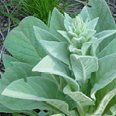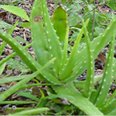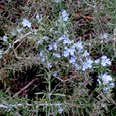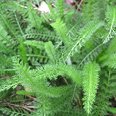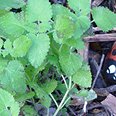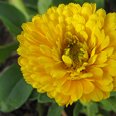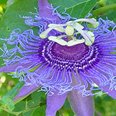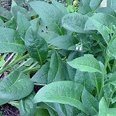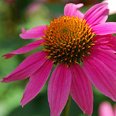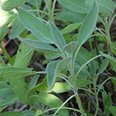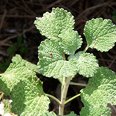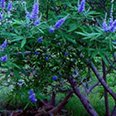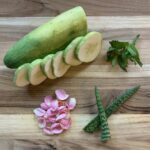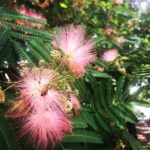Fall Greetings everyone!!! The Equinox has passed and Fall Fever for planting herbs has set in. Read about some of my Favorite Fall Herbs and learn more about growing and using these herbs in your own backyard pharmacy. Please check out the Herbal Studies page and sign up for an Individual Class and/or a small group, hands on, Saturday practicum to learn more about herbs.
The sun is starting to set and I cannot see as clearly as I’d like to. I still need to water my transplants in. I’d better stop gardening, clean up, water and get inside to write this article and fix dinner. I can hardly tear myself away from Fall Gardening. No matter how many times you hear it, it’s TRUE, the best time to garden in Austin, Texas is in the fall. The mornings are cool, the whole day can be spent outside without sweating and the plants love this time of year. You can plant small transplants, seeds, shrubs and trees and just about anything green can be planted now. Of course there are exceptions and as you garden more you will learn those.
learn those.
If you think ahead you can have fresh herbs and vegetables just about all throughout the winter. Of course, if we have some hard freezes you will have to protect some of your plantings. I use a thin white row cover, cut to the size of my vegetable bed. Everything else tender in the garden is cut back and mulched and will hopefully survive any freezes. Fall is the best time to plant Parsley, Petroselinum sativum, either curly or the flat Italian kind. For the last two years I’ve had curly so now I’ll plant the flat. I hear flat Parsley tastes better, we’ll see. Parsley lasts for two years, then it bolts (goes to flower) and it’s done. Plants such as Parsley are called Biennials. I keep one Parsley plant right outside on my deck in a planter box, so while I’m cooking I can just step outside and snip what I need. The other plants are in my garden. I do the same with Basil in the summertime. Parsley seeds can be difficult to germinate (they take quite a long time), so I recommend buying a four inch transplant and planting it in part sun/part shade. Although I planted an entire border in one bed with seeds and they all came up. I use Parsley for soups, stews, tabouli, salads, etc. Fresh Parsley is not only delicious but quite healthy and medicinal as well. Parsley is high in Vitamin C, the leaves and root are used for urinary tract infections and all parts of the plant are good for digestive weakness.
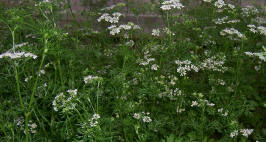 Another great herb to plant now is Cilantro, Coriandrum sativum. Many people love the flavor of cilantro, and some do not. I like it in salsas, salads, with beans, on vegetarian tacos and I even make a pesto from fresh Cilantro leaves so you can enjoy pesto in the wintertime as you do in summer with Basil. Cilantro is easily grown from seed, planted in a sunny location in well -draining soil. After enjoying Cilantro all winter, come springtime the plant will begin to bolt forming a lovely, delicate white flower (wonderful in flower arrangements) and finally go to seed. These seeds are Coriander seeds and can be used as a spice in chili powder, curry powder and the ripe green seeds can be pickled and used like capers. So interestingly, the entire aerial parts of the plant are used for our culinary enjoyment.
Another great herb to plant now is Cilantro, Coriandrum sativum. Many people love the flavor of cilantro, and some do not. I like it in salsas, salads, with beans, on vegetarian tacos and I even make a pesto from fresh Cilantro leaves so you can enjoy pesto in the wintertime as you do in summer with Basil. Cilantro is easily grown from seed, planted in a sunny location in well -draining soil. After enjoying Cilantro all winter, come springtime the plant will begin to bolt forming a lovely, delicate white flower (wonderful in flower arrangements) and finally go to seed. These seeds are Coriander seeds and can be used as a spice in chili powder, curry powder and the ripe green seeds can be pickled and used like capers. So interestingly, the entire aerial parts of the plant are used for our culinary enjoyment.
Another favorite fall herb of mine is Borage, Borago officinalis. Borage seeds can be planted now in full sun and will thrive through the cool months. Borage leaves can be used as an acute treatment for lung congestion, the flowers eaten as an anti-depressant and the oil in the seeds are high in gamma linolenic acid, which like Evening Primrose Oil, is helpful in the treatment of rheumatoid arthritis. The leaves and seeds of Borage are also helpful in increasing the milk supply of nursing mothers.
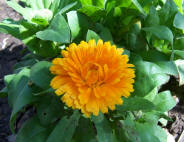 Calendula, Calendula officinalis, is probably my favorite fall herb. Seeds planted now, in full sun, will quickly produce plants that flower rich, vibrant orange flowers in the late winter, early spring. Calendula flowers are edible, act as an anti-depressant (who could stay depressed just looking at these bright, sunny flowers) and an oil and/or salve can be used to treat a large variety of skin disorders. Applied externally calendula salve will effectively treat burns, soothe pain of injuries and irritation and promote the healing of wounds, insect bites and bruises. I make many of my fresh herbal products with Calendula. Click the link and see.
Calendula, Calendula officinalis, is probably my favorite fall herb. Seeds planted now, in full sun, will quickly produce plants that flower rich, vibrant orange flowers in the late winter, early spring. Calendula flowers are edible, act as an anti-depressant (who could stay depressed just looking at these bright, sunny flowers) and an oil and/or salve can be used to treat a large variety of skin disorders. Applied externally calendula salve will effectively treat burns, soothe pain of injuries and irritation and promote the healing of wounds, insect bites and bruises. I make many of my fresh herbal products with Calendula. Click the link and see.
Two other herbs best planted in the fall are Dill, Anethum graveolens, and Fennel, Foeniculum vulgare. Dill grows well from seed, 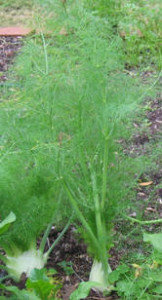 planted in full sun, and I usually find a transplant for Fennel. I have both green Fennel and Bronze Fennel in my garden. Dill leaves are used for cooking fish, in breads and the seeds are used for pickling cucumbers. Both Dill and Fennel have excellent digestive properties, calming flatulence, heartburn, colic and indigestion. Both these herbs are also hosts, or the food plant, to the Eastern Black Swallowtail caterpillar, which will eat the aerial parts of the plant but soon grow to be outstanding butterflies in your garden. Once these critters occupy my Dill or Fennel I just let them be and they don’t seem to bother the rest of my bounty.
planted in full sun, and I usually find a transplant for Fennel. I have both green Fennel and Bronze Fennel in my garden. Dill leaves are used for cooking fish, in breads and the seeds are used for pickling cucumbers. Both Dill and Fennel have excellent digestive properties, calming flatulence, heartburn, colic and indigestion. Both these herbs are also hosts, or the food plant, to the Eastern Black Swallowtail caterpillar, which will eat the aerial parts of the plant but soon grow to be outstanding butterflies in your garden. Once these critters occupy my Dill or Fennel I just let them be and they don’t seem to bother the rest of my bounty.
So if you have a Texas hankerin’ to have any particular plant join your garden, now is the best time to get them in the ground. We still have some time before a first frost, so if you get your planting done now the root system has a chance to establish itself and get ready to hold on for the winter. Besides our beloved herbs, now is the time to scatter our wildflower seeds, water them in, and sit back and enjoy a springtime full of luscious, native Texas wildflowers full of color and magic and delights for our wildlife. Have a great season of fall planting and before you know it we’ll be preparing our garden beds for spring.
See you in the Garden!!!
Ellen Zimmermann, M.A., is the director of the Austin School of Herbal Studies, a Certified Herbalist, and a teacher and speaker on the uses of herbs. She can be reached at 512-301-5838, www.ezherbs.net or ellen@ezherbs.net

